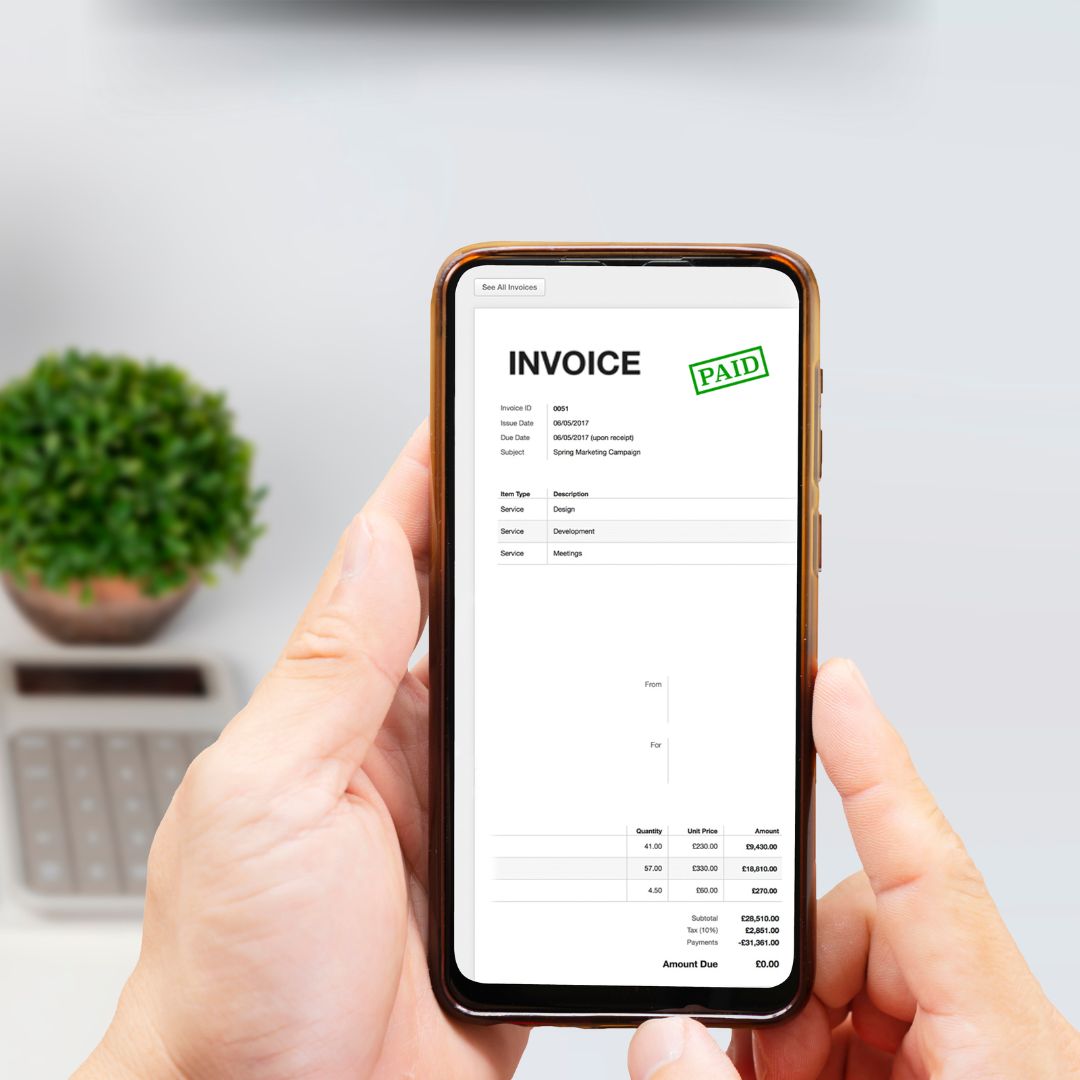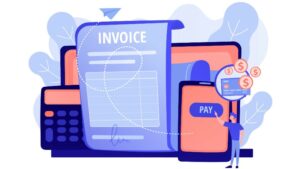The Goods and Services Tax (GST) e-Invoice portal is a critical system designed to simplify the process of generating and validating invoices for businesses in India. As the name suggests, e-Invoicing under GST involves the electronic generation of invoices that comply with the GST rules. Introduced by the Government of India, the primary objective of the GST e-Invoice portal is to digitize and streamline the process of invoicing, reduce tax evasion, and ensure transparency in business transactions. In this blog, we will take a detailed look at how the GST e-Invoice portal works, its key features, benefits, the process of generating an e-invoice, and why it’s a crucial part of GST compliance for businesses.
What is GST E-Invoicing?
GST e-Invoicing is a system in which a specific set of invoices generated by businesses are authenticated electronically through the Goods and Services Tax Network (GSTN). Once an invoice is generated by the supplier in their billing software, it is sent to the GST e-Invoice portal where a unique Invoice Reference Number (IRN) is generated. This IRN is then validated and digitally signed by the Invoice Registration Portal (IRP), and a QR code is issued. The validated invoice, along with the IRN and QR code, is then shared with the supplier. This ensures that every invoice is tracked by the government, reducing the chances of manipulation and tax evasion.
Key Features of the GST E-Invoice Portal
- Invoice Registration Number (IRN): Every invoice uploaded on the e-Invoice portal is given a unique identification number known as the Invoice Registration Number (IRN). This IRN is crucial for tracking invoices and ensuring their authenticity.
- QR Code Generation: The GST e-Invoice portal generates a Quick Response (QR) code for each validated invoice. This QR code contains key invoice details such as GSTIN of the supplier and buyer, invoice number, date, taxable value, and tax amount. It acts as a digital verification tool for quick access to invoice information.
- Real-time Integration: The portal offers real-time integration with billing software, making it seamless for businesses to generate and submit invoices electronically. This integration reduces manual intervention and ensures that the invoice data is accurately captured by the GSTN.
- Multiple Upload Options: The GST e-Invoice portal provides multiple ways to upload invoices, including single invoice upload, bulk upload, and API-based integration. This flexibility caters to businesses of all sizes, from small enterprises to large corporations with a high volume of transactions.
- Error Handling: The portal has built-in mechanisms for error handling. In case an invoice is rejected due to incorrect data or format, the user is notified immediately, allowing them to correct and re-upload the invoice.
- Tracking and Validation: The portal allows businesses to track the status of their invoices in real-time. It also validates the invoice details, ensuring that they comply with GST rules and preventing duplication or manipulation.
- Data Storage: The GST e-Invoice portal stores all validated invoices for future reference. This eliminates the need for physical storage of invoices and provides easy access to invoice records when needed.
Benefits of Using the GST E-Invoice Portal
- Reduction in Errors: One of the biggest advantages of the GST e-Invoice system is that it minimizes errors in invoicing. Since the data is auto-populated from the ERP system or billing software, manual errors are significantly reduced, ensuring that the invoices are accurate and compliant with GST rules.
- Simplified GST Compliance: The e-Invoicing system simplifies GST compliance by integrating the invoice generation and validation process with the GSTN. Once an invoice is validated on the portal, the details are automatically populated into the GST returns, reducing the burden of manual data entry.
- Improved Tax Filing: With e-Invoices, businesses no longer need to worry about missing invoices or incorrect invoice data. The GST e-Invoice portal ensures that all invoice data is accurate and available for use during the filing of GST returns, making the process of tax filing easier and more efficient.
- Enhanced Transparency and Accountability: E-Invoicing enhances transparency in business transactions. By ensuring that every invoice is authenticated and validated by the government, the system reduces the scope for fraudulent practices like fake invoicing and tax evasion. This builds trust between businesses and the tax authorities.
- Seamless Integration with ERP Systems: The GST e-Invoice portal can be seamlessly integrated with a business’s ERP system or billing software, allowing for real-time invoice generation and submission. This integration eliminates the need for manual intervention, reducing the chances of errors and delays in invoicing.
- Cost Savings: The e-Invoicing system reduces the need for paper-based invoices, thereby saving costs related to printing, storage, and mailing. Additionally, businesses can save time and resources by automating the invoicing process and reducing manual efforts.
- Improved Invoice Tracking: The system allows businesses to track their invoices in real-time, making it easier to manage accounts receivables and payables. This improves cash flow management and helps businesses stay on top of their financials.
How to Generate an E-Invoice on the GST E-Invoice Portal
Generating an e-invoice on the GST e-Invoice portal is a straightforward process. Here’s a step-by-step guide:
- Preparation of Invoice: The first step is to generate an invoice using your billing software or ERP system. Ensure that the invoice contains all the mandatory fields required by GST law, such as the GSTIN of the supplier and buyer, invoice number, date, taxable value, and tax amount.
- Upload Invoice to the E-Invoice Portal: Once the invoice is prepared, it needs to be uploaded to the GST e-Invoice portal. The upload can be done via the API integration, bulk upload, or manual entry, depending on the size and volume of invoices.
- Generation of IRN: After the invoice is uploaded, the system generates a unique Invoice Registration Number (IRN). The IRN is a critical identifier that ensures the authenticity of the invoice.
- Validation and Digital Signature: The uploaded invoice is validated by the portal, and a digital signature is affixed to the invoice by the Invoice Registration Portal (IRP). This ensures that the invoice is genuine and cannot be tampered with.
- QR Code Generation: A QR code is generated by the portal and attached to the validated invoice. This QR code contains essential details of the invoice and can be scanned to verify the invoice’s authenticity.
- Receipt of Validated Invoice: The validated invoice, along with the IRN and QR code, is sent back to the supplier. The supplier can then send the validated invoice to the buyer, ensuring that the invoice is compliant with GST rules.
Why is E-Invoicing Crucial for Businesses?
E-Invoicing under GST has become a necessity for businesses in India. With the introduction of mandatory e-Invoicing for businesses with a turnover above a certain threshold, it is essential for companies to adopt this system to ensure GST compliance. E-Invoicing helps in real-time tracking of invoices, reduces the chances of errors, and ensures that the input tax credit claimed by businesses is accurate. Moreover, the e-Invoicing system reduces the burden of manual entry and documentation, allowing businesses to focus on more critical operations. By digitizing the invoicing process, businesses can not only streamline their operations but also reduce costs and improve efficiency. Additionally, e-Invoicing plays a significant role in reducing tax evasion and fraud, as it ensures that every transaction is recorded and monitored by the GSTN.
Conclusion
The GST e-Invoice portal is a game-changer for businesses in India. It simplifies the process of invoicing, ensures compliance with GST rules, and enhances transparency in business transactions. By adopting the e-Invoicing system, businesses can reduce errors, improve efficiency, and stay compliant with GST regulations. As the government continues to expand the scope of e-Invoicing, it is essential for businesses to understand how the system works and how they can benefit from it. Whether you are a small business or a large corporation, the GST e-Invoice portal offers a streamlined, efficient, and cost-effective solution for managing invoices and ensuring GST compliance.












